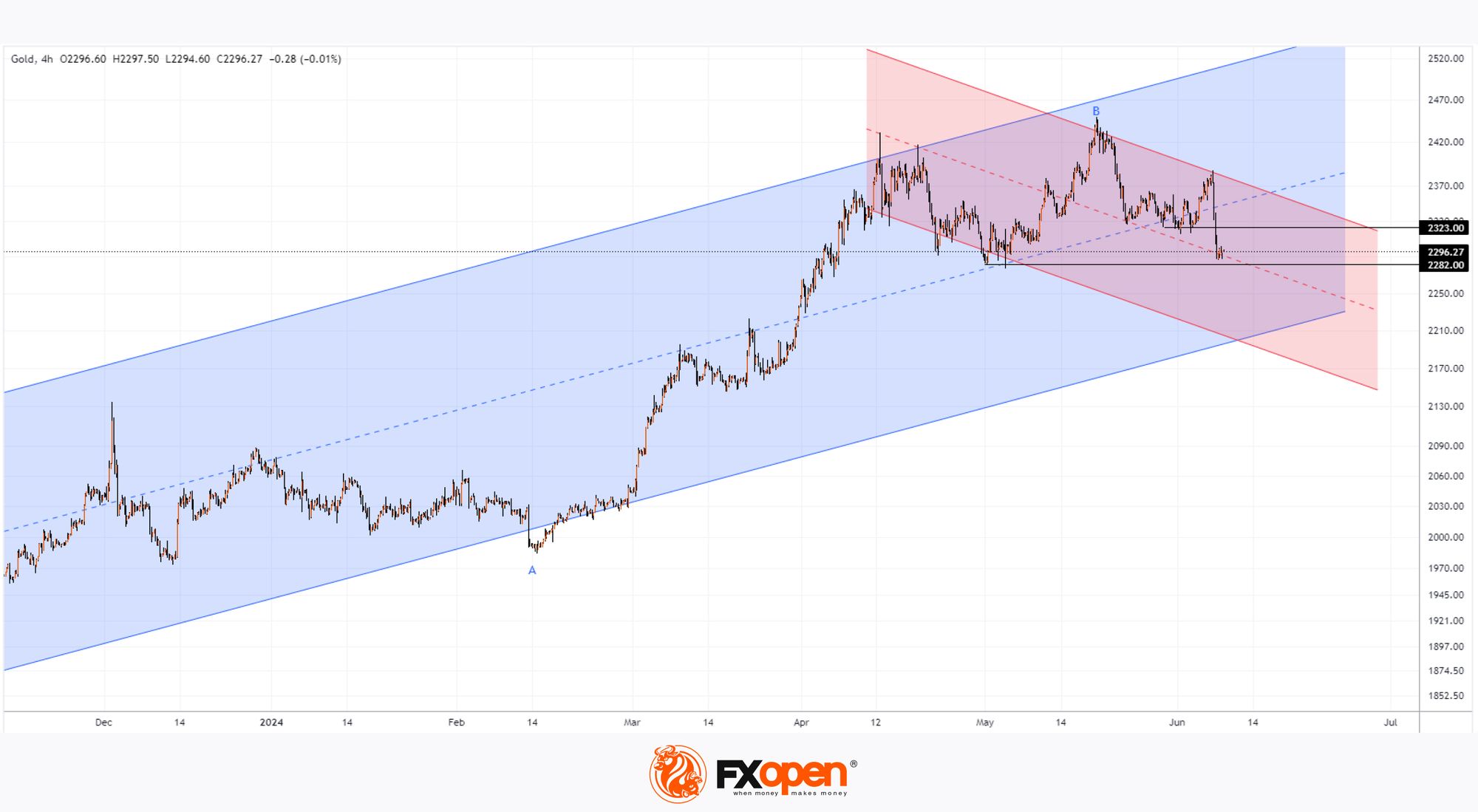FXOpen

As per ForexFactory, the Non-Farm Employment Change report revealed an actual increase of 272 thousand jobs (expected = 182k, previous value = 165k).
A robust job market provides further arguments for the Federal Reserve to continue its tight monetary policy. Consequently, the news led to a rise in the dollar index and a decrease in assets denominated in US dollars:
→ Currencies depreciated; for instance, the NZD/USD rate decreased by approximately 1.5%;
→ Cryptocurrencies declined; Bitcoin dropped by roughly 3%;
→ Gold also decreased in price.
The situation worsens for the gold price with the news that China has stopped buying the metal for reserves after doing so for 18 months. According to ING, China's appetite showed signs of weakening in April when the central bank purchased only 60,000 ounces compared to 160,000 ounces in March.

Today's XAU/USD chart shows that the gold price fell below the $2300 level for the first time since May 6th.
According to the technical analysis of the gold chart:
→ The price has been moving in an ascending trend (shown by the blue channel) since last autumn;
→ However, after reaching a historical peak on May 20th, the price shows a downward trend (shown by the red channel);
→ The red channel may indicate a developing correction within the current bullish market.
Using Friday's news release, bears managed to lower the price of gold into the lower half of the ascending blue channel, confirming the thesis of a correction. It is possible that the XAU/USD price will continue to decline within the red correctional channel.
Furthermore, the target for bears may be around the $2200 level, as approximately:
→ It aligns with the lower boundary of the blue channel, from which bulls may attempt to resume the ascending trend;
→ It corresponds to the 50% Fibonacci retracement level from the bullish impulse A→B.
Potential resistance levels in case bulls attempt to recover from Friday's decline:
→ $2323, which acted as support since late May but was breached;
→ The median line of the blue channel.
Start trading commodity CFDs with tight spreads. Open your trading account now or learn more about trading commodity CFDs with FXOpen.
This article represents the opinion of the Companies operating under the FXOpen brand only. It is not to be construed as an offer, solicitation, or recommendation with respect to products and services provided by the Companies operating under the FXOpen brand, nor is it to be considered financial advice.
Stay ahead of the market!
Subscribe now to our mailing list and receive the latest market news and insights delivered directly to your inbox.








